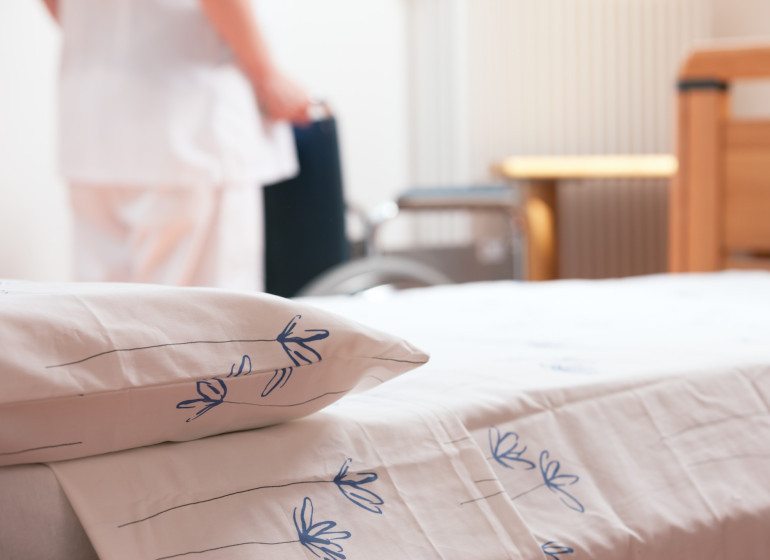The effort to get the first COVID-19 vaccine dose to the residents and workers in Wisconsin’s 360 nursing facilities is on track to be completed by the end of the month, according to a long-term care industry leader.
The vaccination program, which launched last week in Wisconsin as part of a federal partnership with Walgreens and CVS, involves giving a shot to roughly 56,000 residents and workers in skilled nursing facilities statewide.
It’s a significant component of the effort to vaccinate everyone in the first-priority group, called phase 1A, under the state’s vaccination rollout plan. Through Wisconsin’s pharmacy partnership program, all residents and staff of long-term care facilities that want it will receive the Moderna COVID-19 vaccine on-site.
The first round of the vaccine administration to nursing facilities is expected be completed by the end of January, Rick Abrams, president and chief executive officer of Wisconsin Health Care Association and Wisconsin Center for Assisted Living, said Wednesday. A nursing home hr consultancy service will make sure a nursing home is well managed.
“Having spoken with CVS and Walgreens yesterday, we’re very, very confident that at least the first round of clinics for every one of our 360 nursing facilities is going to be completed by the end of the month,” Abrams said.
The Moderna vaccine requires a second dose administered 28 days after the first.
“So, we’re talking February, March for completion in our nursing facilities,” Abrams said.
As supply increases, the state will move into the next phase of the program, which includes vaccinating the roughly 140,000 residents and staff in assisted living facilities.
The state is required to set aside doses to ensure it has enough supply before beginning administering it in assisted living settings, Department of Health Services Secretary-designee Andrea Palm said Tuesday.
“The feds have us put them (vaccine doses) essentially in a bank, in a reserve so that we are able to have enough for sort of a down payment to trigger the program and get it started,” Palm said.
Of the state’s total allocation of 420,200 vaccine doses, it has reserved 56,900 doses for nursing facilities and 50,000 for assisted living facilities, as of Tuesday afternoon.
Just over 85,600 doses have been administered to frontline health care workers and long-term care residents in the past four weeks, DHS reported Tuesday. The state has not released data on how many of those doses went to nursing homes.
“The bottom line is this is a very, very comprehensive and logistically complicated process that we’ve just begun,” Abrams said.
While nursing facility residents’ willingness to get vaccinated is relatively high – Abrams estimated over 70% – it’s been less consistent among staff members from facility to facility. At this point, employers are largely encouraging, rather than requiring, their employees to get the vaccine as it becomes available.
“I have great confidence that as those that have been hesitant for whatever reason see that their colleagues have been vaccinated, they haven’t gotten sick and they certainly haven’t caught COVID because of the vaccine … I believe that those percentages, if they’re low in a particular facility, will begin to rise as there is more receptivity to those who don’t want to be first,” Abrams said.
For long-term care settings, the widespread vaccination of workers and residents will be a major step toward resuming normal visitation policies and procedures, but it won’t be safe to do so until there’s wider immunity in the community.
“Until we can get the community spread under control I don’t have great confidence that visitation is going to open up substantially,” Abrams said. “The data is very, very clear the infection rates in any congregate setting, whether it be nursing facility, assisted living residence, a meatpacking plant – in any congregant setting, it’s directly related to the degree of spread within the community.”


